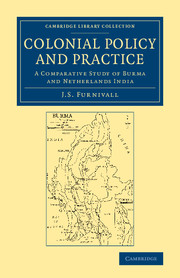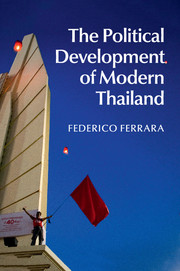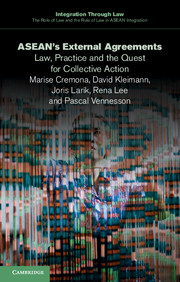1714 results in South-East Asian government, politics and policy
1 - Ethnic Diversity or Institutions? The Source of Public Goods Underprovision
- from Part I - Electoral Rules, Ethnicity, and Health in Developing Countries
-
- Book:
- Coalitions of the Well-being
- Published online:
- 05 July 2015
- Print publication:
- 26 June 2015, pp 3-23
-
- Chapter
- Export citation
Part II - Electoral Rules and Health in Low Ethnic-Salience Countries
-
- Book:
- Coalitions of the Well-being
- Published online:
- 05 July 2015
- Print publication:
- 26 June 2015, pp 91-152
-
- Chapter
- Export citation
4 - Testing the Theory: Health and Education Outcomes in Developing Democracies
- from Part I - Electoral Rules, Ethnicity, and Health in Developing Countries
-
- Book:
- Coalitions of the Well-being
- Published online:
- 05 July 2015
- Print publication:
- 26 June 2015, pp 74-90
-
- Chapter
- Export citation
11 - Conclusion
- from Part V - Conclusion
-
- Book:
- Coalitions of the Well-being
- Published online:
- 05 July 2015
- Print publication:
- 26 June 2015, pp 243-254
-
- Chapter
- Export citation

Colonial Policy and Practice
- A Comparative Study of Burma and Netherlands India
-
- Published online:
- 05 June 2015
- Print publication:
- 21 August 2014

Lost in China?
- Law, Culture and Identity in Post-1997 Hong Kong
-
- Published online:
- 05 May 2015
- Print publication:
- 30 April 2015

The Political Development of Modern Thailand
-
- Published online:
- 05 May 2015
- Print publication:
- 26 March 2015

ASEAN's External Agreements
- Law, Practice and the Quest for Collective Action
-
- Published online:
- 05 May 2015
- Print publication:
- 16 April 2015

ASEAN Economic Cooperation and Integration
- Progress, Challenges and Future Directions
-
- Published online:
- 05 May 2015
- Print publication:
- 16 April 2015

ASEAN as an Actor in International Fora
- Reality, Potential and Constraints
-
- Published online:
- 05 May 2015
- Print publication:
- 16 April 2015

The Foundation of the ASEAN Economic Community
- An Institutional and Legal Profile
-
- Published online:
- 05 May 2015
- Print publication:
- 16 April 2015
Copyright page
-
- Book:
- Lost in China?
- Published online:
- 05 May 2015
- Print publication:
- 30 April 2015, pp iv-iv
-
- Chapter
- Export citation
6 - Patrolling the walls of law
-
- Book:
- Lost in China?
- Published online:
- 05 May 2015
- Print publication:
- 30 April 2015, pp 141-149
-
- Chapter
- Export citation
Index
-
- Book:
- Lost in China?
- Published online:
- 05 May 2015
- Print publication:
- 30 April 2015, pp 261-268
-
- Chapter
- Export citation
3 - Transitional fears and fantasies
-
- Book:
- Lost in China?
- Published online:
- 05 May 2015
- Print publication:
- 30 April 2015, pp 68-92
-
- Chapter
- Export citation
2 - Walls of law
-
- Book:
- Lost in China?
- Published online:
- 05 May 2015
- Print publication:
- 30 April 2015, pp 41-67
-
- Chapter
- Export citation
13 - The culture wars: globalism, nationalism and localism
-
- Book:
- Lost in China?
- Published online:
- 05 May 2015
- Print publication:
- 30 April 2015, pp 209-222
-
- Chapter
- Export citation
Acknowledgements
-
- Book:
- Lost in China?
- Published online:
- 05 May 2015
- Print publication:
- 30 April 2015, pp viii-viii
-
- Chapter
- Export citation
11 - The law wars: law and civil society
-
- Book:
- Lost in China?
- Published online:
- 05 May 2015
- Print publication:
- 30 April 2015, pp 191-196
-
- Chapter
- Export citation
5 - The disappearance of Yu Man-hon
-
- Book:
- Lost in China?
- Published online:
- 05 May 2015
- Print publication:
- 30 April 2015, pp 114-140
-
- Chapter
- Export citation

